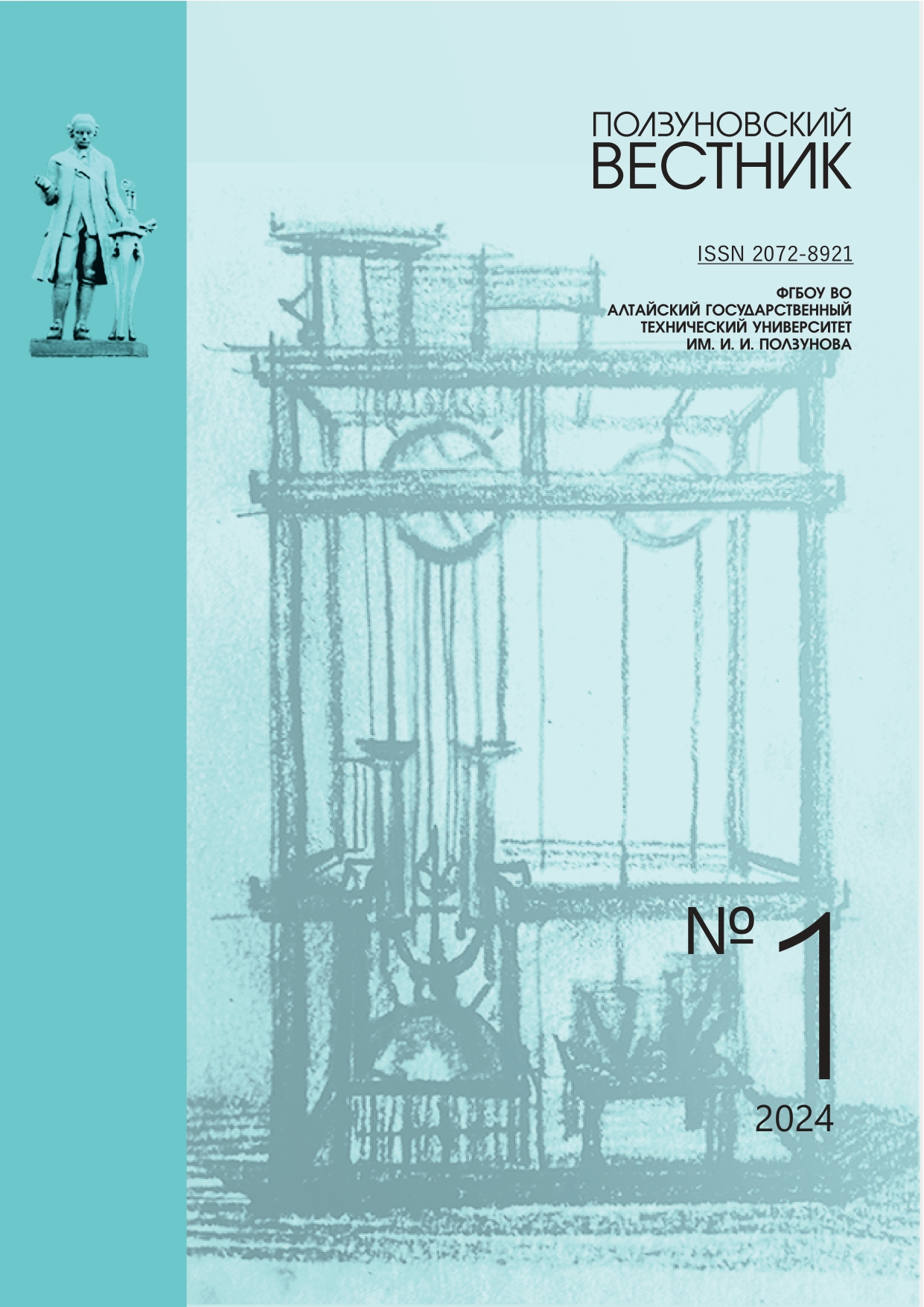НОВЫЙ ВИД МЯСНОГО ПРОДУКТА СО СПИРУЛИНОЙ
PSYIJM
DOI:
https://doi.org/10.25712/ASTU.2072-8921.2024.01.011Аннотация
Актуальность проведения исследований представлена в соответствии с программой государственной политики Российской Федерации в области здорового питания населения и производства продуктов функциональной направленности. Целью данной работы являлось проведение оценки функционально-технологических свойств спирулины и разработка рецептуры мясного продукта, обогащенного спирулиной. В процессе научного исследования и решения необходимых задач использовались общепринятые ГОСТы, стандартные, стандартизированные и модифицированные методики. Объектом исследования стал порошок спирулины (ОРГТИМУМ), модельные фаршевые системы из свинины, мясные полуфабрикаты в тесте. При оценке функционально-технологических свойств спирулины были получены результаты химического состава порошка спирулины: массовая доля белка -57%, массовая доля жира – 7%, массовая доля углеводов – 20%, Так же полученные результаты исследования показали важные в мясной промышленности свойства, которыми обладает данная добавка: водопоглащающая способность -117,8%, жиропоглащающая -117,0%, степень набухаемости -177,6%.. При этом, спирулина не имеет гелеобразующей и эмульгирующей способности. Добавление спирулины положительно сказывалось на сохранность образцов модельных фаршевых систем после термической обработки. Полученные данные подтверждает технологическую ценность данного ингредиента. В работе разработана рецептура мясных полуфабрикатов в тесте в 7 вариантах процентного соотношения порошка спирулины. Наиболее высокие технологические, функциональные и органолептические свойства проявили полуфабрикаты по разработанной рецептуре с дозой внесения спирулины в начинку для мясных полуфабрикатов в тесте (пельменей) 1%.
Библиографические ссылки
Galasso, C.& Gentile, A. & Orefice, I., et.al (2019). Microalgal derivatives as potential nutraceutical and food supplements for human health: a focus on cancer prevention and interception // Nutrients. 2019;11:1226.
Luo, A. & Feng, J. & Hu, B. et al (2018). Arthrospira (Spirulina) platensis extract improves oxidative stability and product quality of Chinese-style pork sausage/J Appl Phycol.2018;30:1667–1677 (2018). https://doi.org/10.1007/s10811-017-1347-4.
Duda-Chodak A. (2013). Impact of water ex-tracts of Spirulina (WES) on bacteria, yeasts and molds. Acta Scientiarum polonorum.// Technologia Alimentaria. 2013;12(1):33-39.
Parada, J.L. & Zulpa de Caire, G. & Zaccaro de Mulé, M.C. & Storni de Cano, M.M. (2018). Lac-ticacid bacteria growth promoters from Spirulina platensis. / // Int J Food Microbiol. 2018;45:225–228. doi: 10.1016/S0168-1605(98)00151-274.
Белявская И.Г. Научно-практические основы технологии хлебобулочных изделий с направленной коррекцией пищевой ценности и антиоксидантных свойств. Дисс. на соискание ученой степени док. тех. наук.: 05.18.01.[Место защиты: Московский государственный университет пищевых производств]. – Москва, 2019. 381 с.
Белявская И.Г., Черных В.Я., Гришина Л.Н. Определение антиоксидантной емкости хлебобулочных изделий со спирулиной // Хлебопро-дукты. 2012. № 5. С. 46-47.
Агеев И.А., Мамаев А.В., Мамаева О.А. Функционально-технологические свойства печеночного паштета с белковым комплексом синезеленой водоросли спирулины // В сборнике: Актуальные проблемы современной науки: теория и практика. Материалы Международной (заочной) научно-практической конференции. Под общей редакцией А.И. Вострецова. Нефтекамск. 2020. С. 161-165.
Barkallah M. & et.al. (2019). Effect of spiruli-na platensis biomass with high polysaccharides con-tent on quality attributes of common carp (Cyprinus carpio) and common barbel (Barbus barbus) fish burgers. // Appl. Sci. 2019;9:21-77.
Tom, M.M. & Bernaerts, & Lore Geysen & et al. (2019). The potential of microalgae and their bi-opolymers as structuring ingredients in food: A review, Biotechnol ADV.// 2019;37(8):107419 doi:10.1016.
Zugčić, T. & Abdelkebir, R. & Barba, F.J. & et al. (2018). Effects of pulses and microalgal proteins on quality traits of beef patties. J Food Sci Technol //. 2018;55(11):4544–4553. doi:10.1007/s13197-018-3390-9.6.
Kurd, F. & Samavati, V.(2015). Water soluble polysaccharides from Spirulina platensis: Extraction and in vitro anticancer activity.// Int. J. Biol. Macromol. 2015;74:498–506.
Румянцева В.В., Хмелева Е.В., Жижина Л.А. Перспективы использования микроводоросли spirulina // Научный журнал НИУ ИТМО. Серия «Процессы и аппараты пищевых производств». 2018. №3. С. 20-25.
Аникин С.С., Заболотнов В.А., Рыбалка А.Н. Профилактика прогрессирования анемии беременных с применением сиропа спирулины "vitaspirum" // Таврический медико-биологический вестник. 2015. Т. 18. № 1. С. 7-10.
Ghaeni, M. &, Roomiani, L. (2016). Review for application and medicine effects of Spirulina, Spirulina platensis microalgae // JOAAT. 2016;3:114–117.
Handayania, N.A. & Ariyantib, D. & Hadiyanto, H.(2011). Potential Production of Polyunsaturated Fatty Acids from Microalgae. Intern. J. Sci. Eng. 2011;2:3–16.
Caporgno, M.P. & Mathys, A. (2018). Trends in microalgae incorporation into innovative food products with potential health benefits. Front Nutr. 2018;5:58. doi:10.3389/ fnut. 2018. 00058.
Загрузки
Опубликован
Как цитировать
Выпуск
Раздел
Лицензия
Copyright (c) 2024 Надежда Павловна Шевченко, Марина Васильевна Каледина, Татьяна Сергеевна Павличенко, Виктория Петровна Витковская, Людмила Викторовна Волощенко

Это произведение доступно по лицензии Creative Commons «Attribution» («Атрибуция») 4.0 Всемирная.
















 .
. Контент доступен под лицензией
Контент доступен под лицензией 
